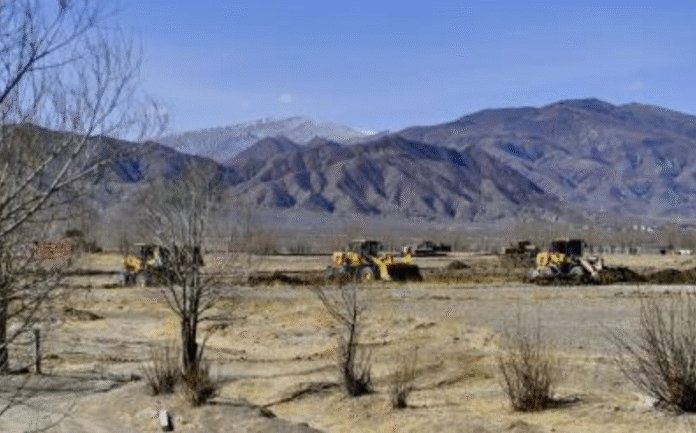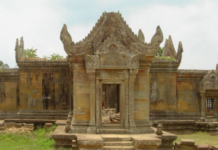BEIJING — A large-scale fireworks display titled ‘Rising Dragon’ has left long-lasting damage to the fragile ecosystem of the Tibetan Plateau near Gyantse County, raising fresh questions about China’s environmental commitments and cultural sensitivity, according to a report by Myanmar-based outlet The Irrawaddy.
The event, staged on September 19 at around 4:30 p.m., featured 1,050 fireworks erupting across the mountainside between altitudes of 4,670 and 5,020 meters, forming a dragon-shaped trail of smoke and fire against the Himalayan peaks. The 52-second display was a collaboration between outdoor brand Arc’teryx and acclaimed Chinese artist Cai Guoqiang, promoted as a tribute to nature’s grandeur.
However, investigators said the spectacle caused substantial environmental damage. The Shigatse Municipal Investigation Team in Tibet later confirmed that 30.06 hectares of grassland had been destroyed, with soil and turf structures flattened by human activity and vehicle movement. The team also found that fireworks residue, plastic debris, and other waste were not adequately removed, while loud explosions and bright flashes temporarily disturbed local wildlife.
Environmentalists and local Tibetans condemned the event as emblematic of China’s widening gap between its “ecological civilization” narrative and on-the-ground realities of exploitation and environmental harm. Critics also pointed to cultural insensitivity, noting that the dragon—a symbol deeply tied to Chinese national identity—was projected across land Tibetans regard as sacred and inhabited by protective deities.
The report emphasized that the incident highlights the growing tension between commercial art, corporate branding, and environmental stewardship in one of the planet’s most sensitive regions. It also warned that the Tibetan Plateau, already warming at twice the global average, cannot withstand further degradation from such spectacles.
“The sacred mountains of Tibet, home to protective deities in Tibetan cosmology and vital water sources for billions, demand not fireworks tributes but genuine protection—from the very forces that claim to honor them,” the report concluded.













